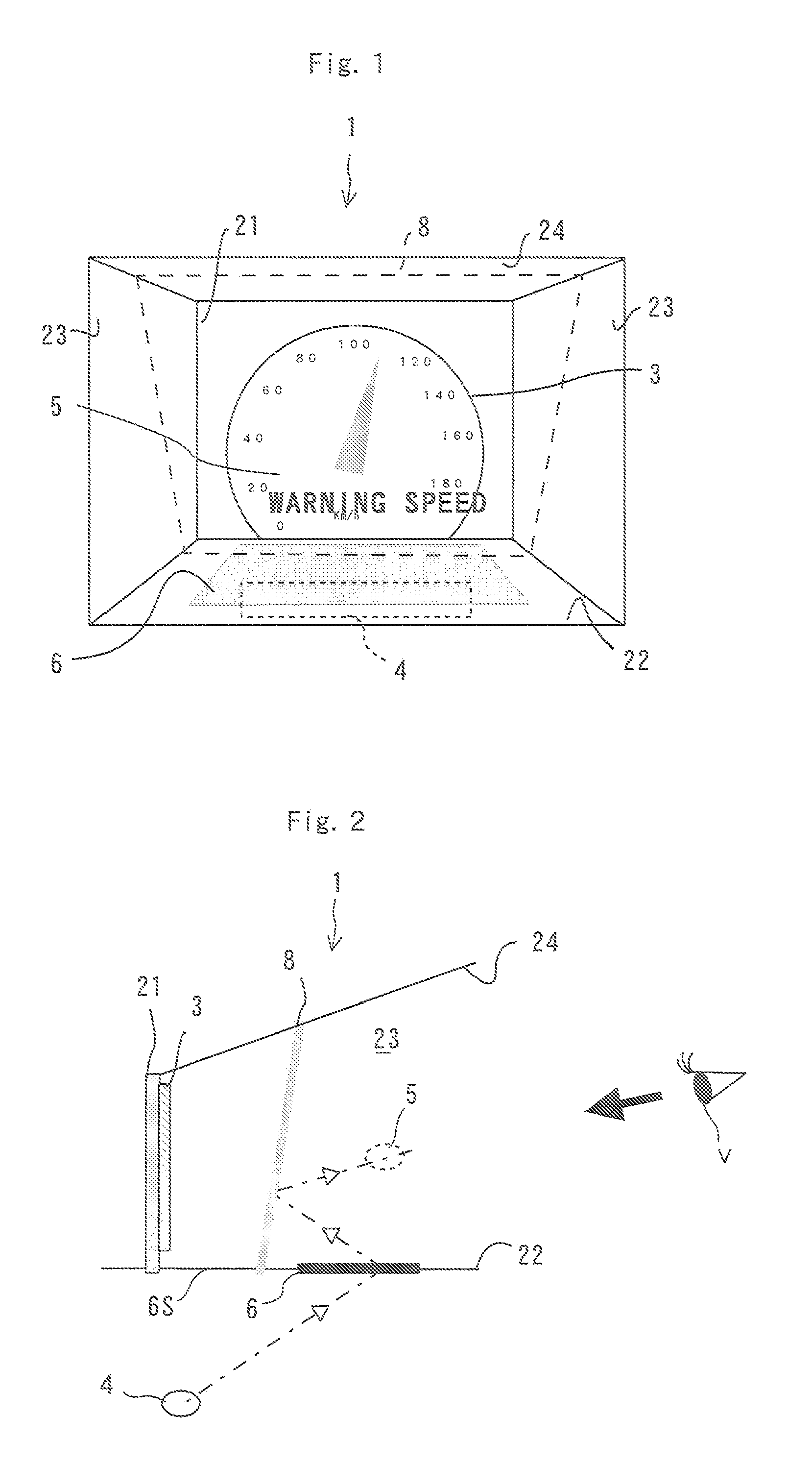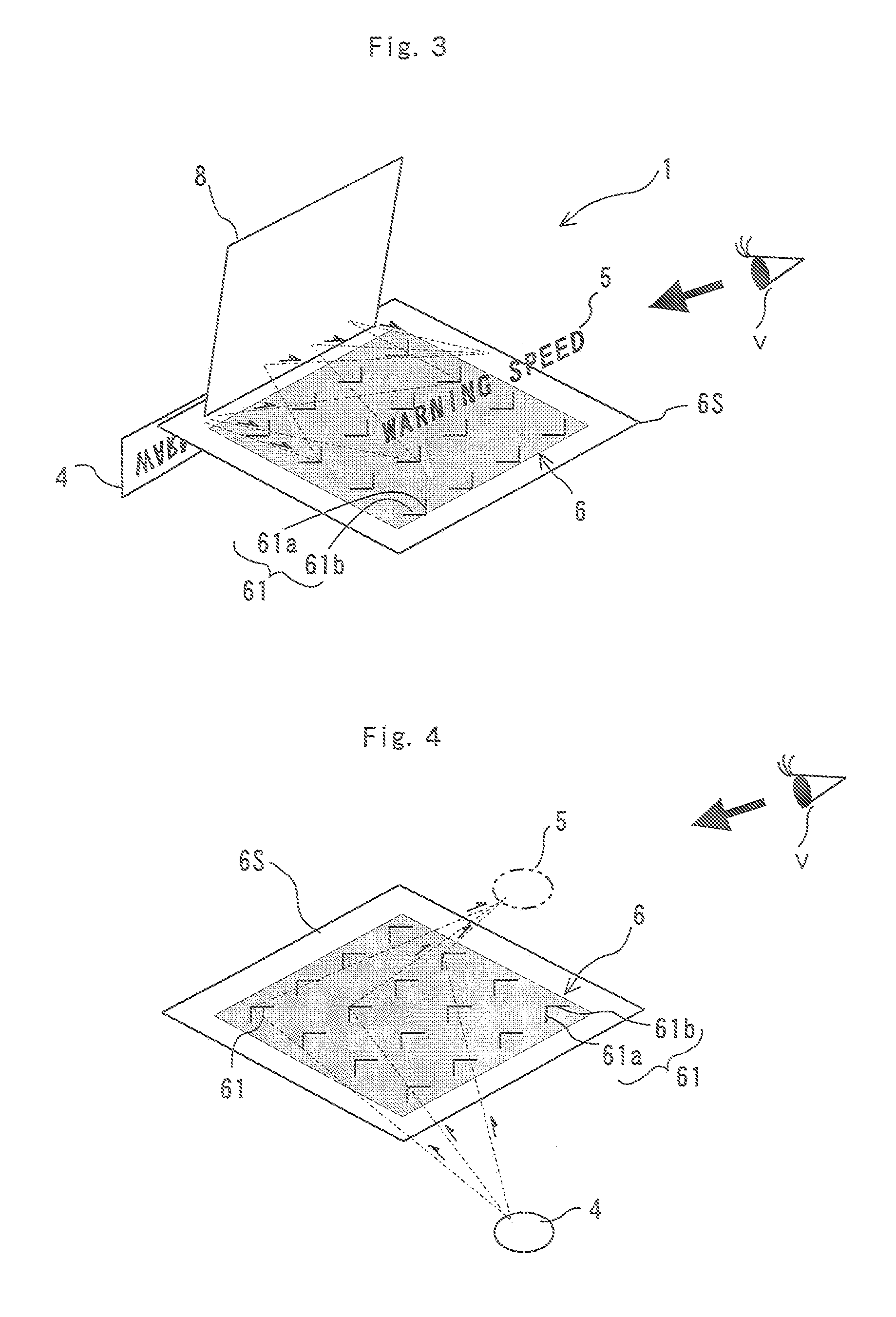Display device
a display device and display technology, applied in the field of display devices, can solve the problems of not being able to form impressive images such as those that are partially made stereoscopic, and the real image cannot be superimposed, and the resultant image is not impressiv
- Summary
- Abstract
- Description
- Claims
- Application Information
AI Technical Summary
Benefits of technology
Problems solved by technology
Method used
Image
Examples
Embodiment Construction
[0044]A display device of an embodiment according to the present invention will be described herein below by referring to the drawings.
[0045]FIG. 1 is a schematic front view illustrating an instrument panel of a vehicle such as an automobile and its surroundings including a display device 1 of the embodiment of the present invention. FIGS. 2 and 3 are schematic sectional and perspective views respectively that explain the operation of the display device 1.
[0046]The display device 1 is made by applying the present invention to an instrument panel and to its surroundings on the driver's side of a transportation machine such as an automobile. Specifically, as shown in FIG. 2, the display device 1 includes a back wall 21 farthest from the viewpoint of a driver as a viewer V, a bottom wall 22, right and left side walls 23, and an upper wall 24 connecting to the back wall 21 and arranged to surround a space in front of the back wall 21 when viewed from the driver, and a display area 3 as ...
PUM
 Login to View More
Login to View More Abstract
Description
Claims
Application Information
 Login to View More
Login to View More - R&D
- Intellectual Property
- Life Sciences
- Materials
- Tech Scout
- Unparalleled Data Quality
- Higher Quality Content
- 60% Fewer Hallucinations
Browse by: Latest US Patents, China's latest patents, Technical Efficacy Thesaurus, Application Domain, Technology Topic, Popular Technical Reports.
© 2025 PatSnap. All rights reserved.Legal|Privacy policy|Modern Slavery Act Transparency Statement|Sitemap|About US| Contact US: help@patsnap.com



